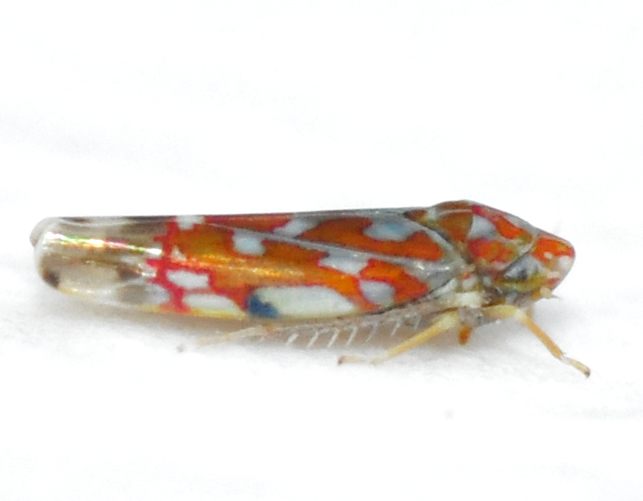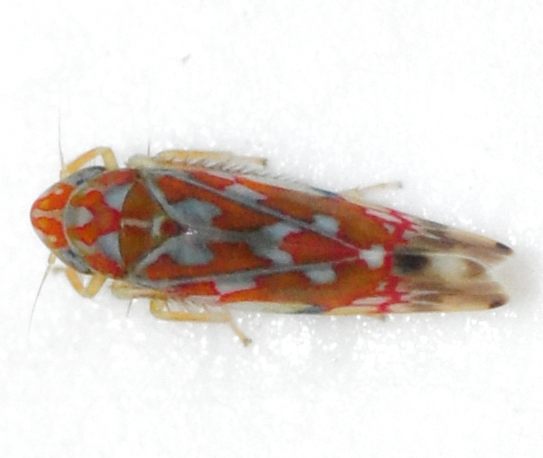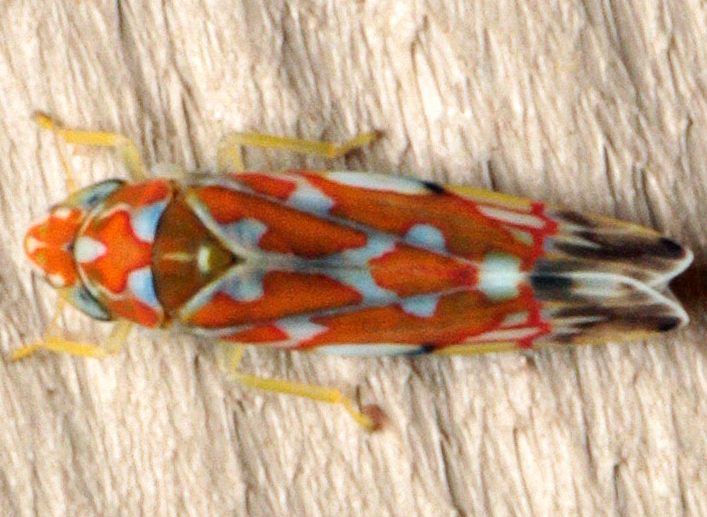| Comment: There are three species of Erythroneura that feed on dogwood and are very similar in appearance; this includes E. rubrella which is a vibrant red color, E. corni which has extensive red markings on the head (compared to E. rubrella, which has limited, less bold markings and has a brighter red color pattern), and E. ontari which has a less vibrant and bold color pattern. E. rubra, which feeds on grapes (Vitis sp.), is also very similar in appearance to E. rubrella and E. corni, though it has a pale midline on the top of the head.
E. rubra though is most similar to E. festiva. Both species have very similar color patterns with slight differences. Size wise, E. rubra is slighty but noticeably larger: E. rubra is 2.9- 3.1 mm long, whereas E. festiva is 2.6-2.7 mm. Additionally, in festiva the head markings are more extensive with a noticeable lateral branch off of the submedial lines; this lateral branch encapsulates a prominent white circle near the eyes. In rubra, the lateral branch is either lacking or not very well defined, and the submedial lines tend to be much broader and bolder. The antyclypeus of festiva is brown, while in rubra it is typically pale, concolorous with the rest of the face. Finally, in rubra the red coloration on the wings is more extensive, with smaller pale bluish spots, especially the three near the middle of the back; in festiva, these bluish spots are larger and more block-shaped.
Dark individuals of E. reflecta could also be confused with E. rubra. However, note differences in color and pattern: in reflecta, the dark red color pattern contrasts with bold white patches whereas in rubra the lighter red color pattern contrasts with pale blue patches. Here are some helpful images differentiating between rubra and reflecta: normal rubra, atypical rubra, atypical reflecta.
Due to variation among individuals, as well as the similarity between these species, in some situations a species level identification may not be possible, or be a best guess at most. |

 »
»




 »
»


